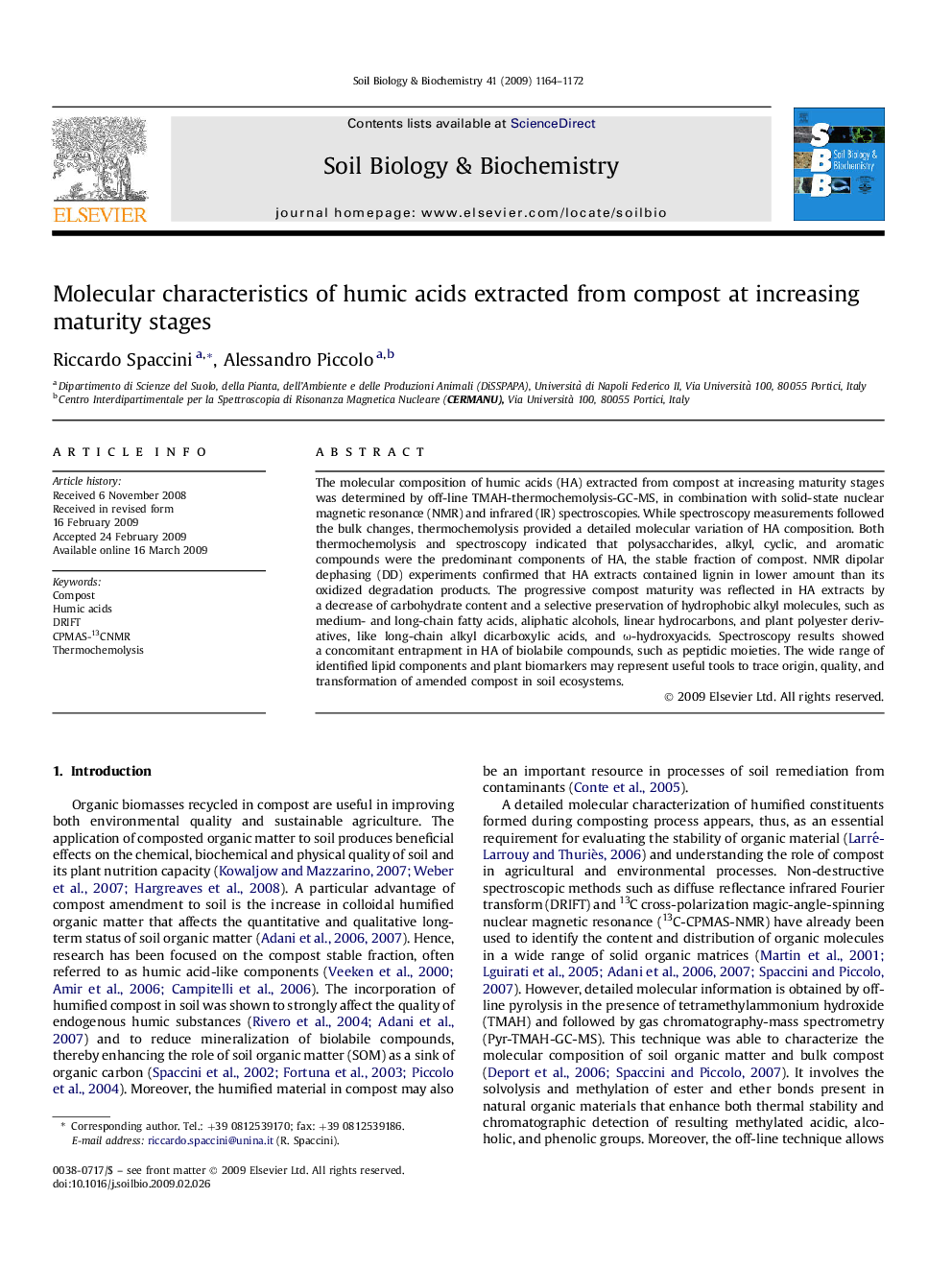| Article ID | Journal | Published Year | Pages | File Type |
|---|---|---|---|---|
| 2025618 | Soil Biology and Biochemistry | 2009 | 9 Pages |
The molecular composition of humic acids (HA) extracted from compost at increasing maturity stages was determined by off-line TMAH-thermochemolysis-GC-MS, in combination with solid-state nuclear magnetic resonance (NMR) and infrared (IR) spectroscopies. While spectroscopy measurements followed the bulk changes, thermochemolysis provided a detailed molecular variation of HA composition. Both thermochemolysis and spectroscopy indicated that polysaccharides, alkyl, cyclic, and aromatic compounds were the predominant components of HA, the stable fraction of compost. NMR dipolar dephasing (DD) experiments confirmed that HA extracts contained lignin in lower amount than its oxidized degradation products. The progressive compost maturity was reflected in HA extracts by a decrease of carbohydrate content and a selective preservation of hydrophobic alkyl molecules, such as medium- and long-chain fatty acids, aliphatic alcohols, linear hydrocarbons, and plant polyester derivatives, like long-chain alkyl dicarboxylic acids, and ω-hydroxyacids. Spectroscopy results showed a concomitant entrapment in HA of biolabile compounds, such as peptidic moieties. The wide range of identified lipid components and plant biomarkers may represent useful tools to trace origin, quality, and transformation of amended compost in soil ecosystems.
